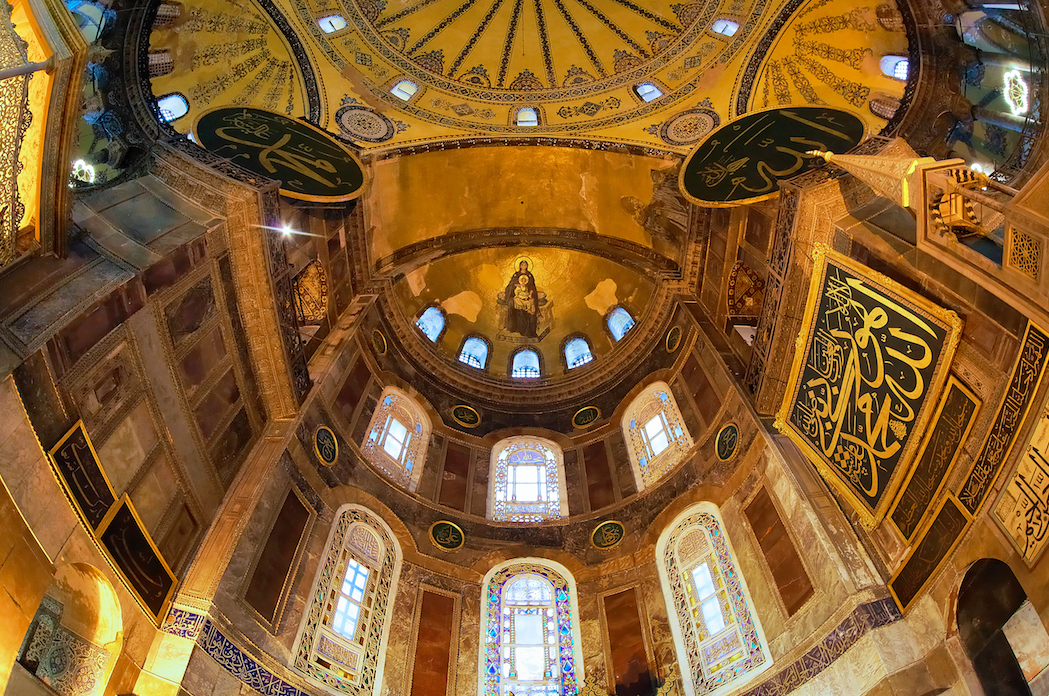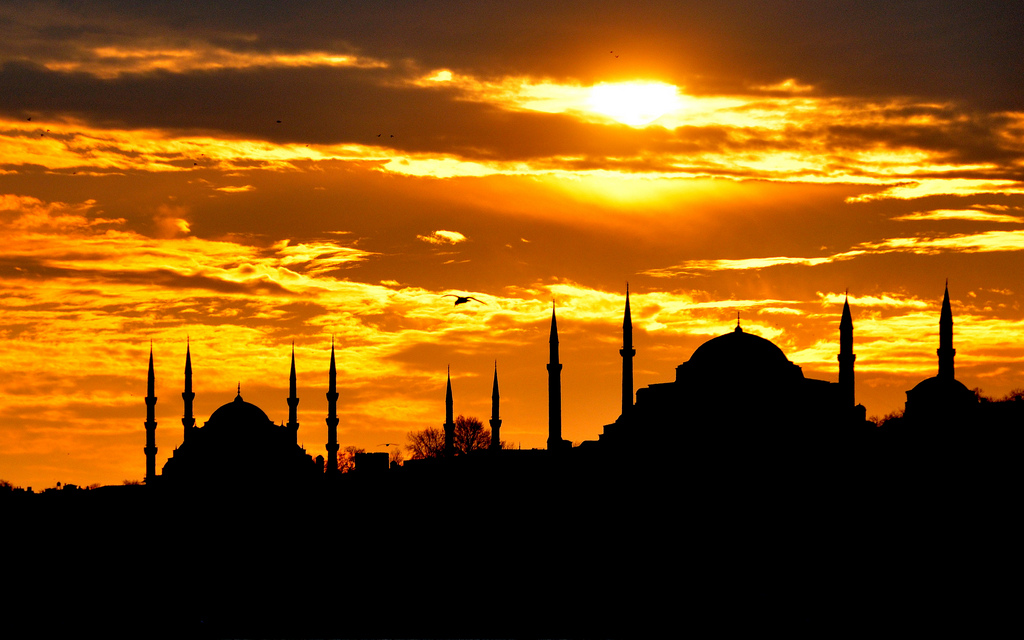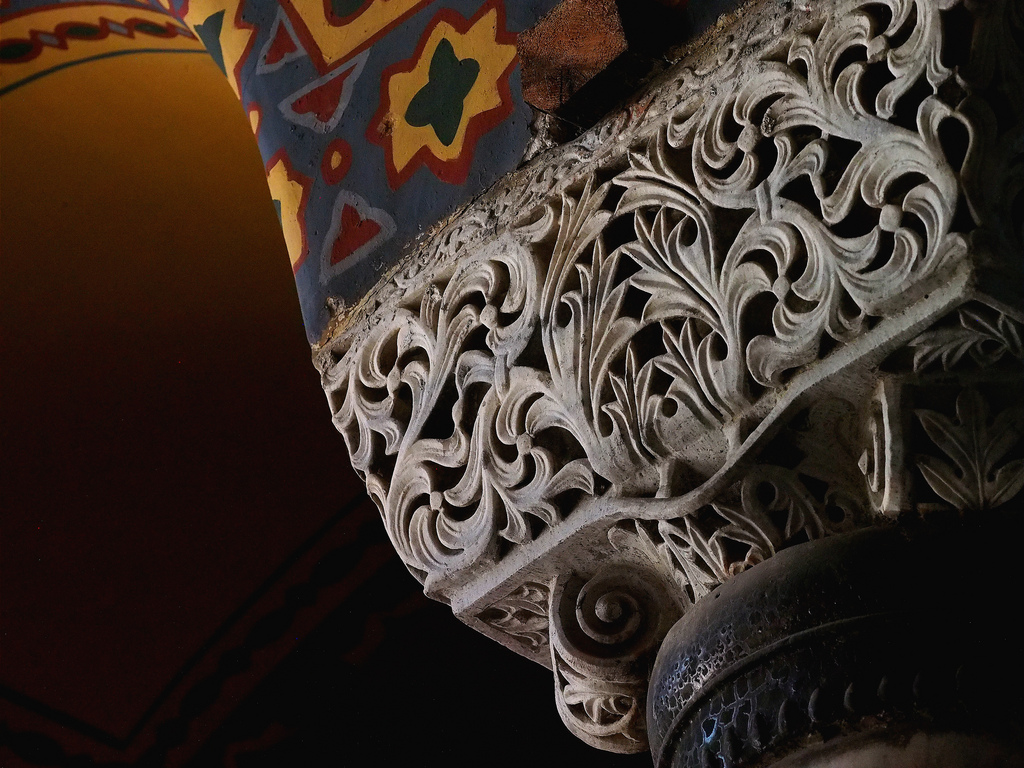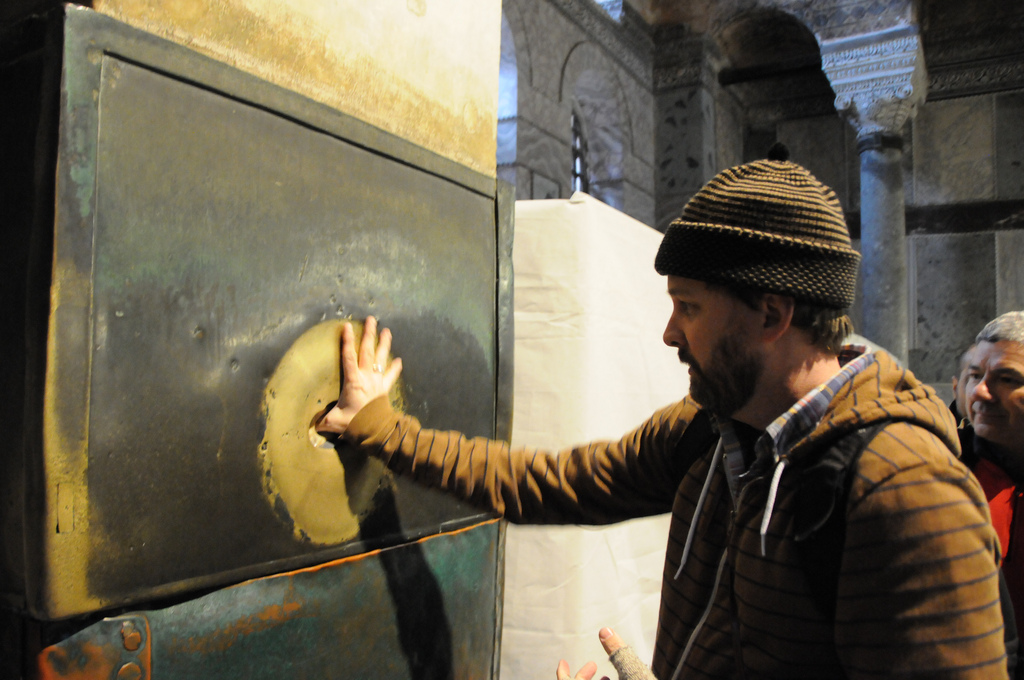Hagia Sophia
Often referred to as the eighth wonder of the World, the Hagia Sophia (Ayasofya in Turkish) in Sultanahmet is easily one of Istanbul's most impressive sights. It also must have one of the most turbulent histories of any museum in the world. To find out why, it's best to look back through its previous incarnations:
The Hagia Sophia Church
The structure that stands today was actually the third church to be built on this site. The first two (built in AD 360 and Ad 415 respectively) were both razed to the ground in troubled Byzantine times. Emperor Justinian commissioned the current building in the sixth century as a Greek Orthodox Church that would outdo the Temple of Solomon in Jerusalem. It took just five years and the manpower of nearly 11,000 people to erect the structure that was the largest Christian church in the world for nearly a thousand years. In 1204, the Crusaders displaced the Patriarch of Constantinople with a Latin bishop, which is why much of its original relics can now be found in St. Mark's Basillica in Venice.
The Hagia Sophia Mosque
Following the capture of Constantinople by the Ottoman Turks in 1453, and the subsequent pillaging that ensued, Mehmet the Conqueror declared the Hagia Sophia a mosque, and said his prayers there the very next Friday. As a mosque, it was considered as one of the holiest Islamic temples of the world. It also served as Istanbul's principal mosque for nearly 500 years and was used as a model for many others including the Sultan Ahmet Mosque , the Suleymaniye Mosque and the Rustem Pasha Mosque.

The Hagia Sophia Museum
Under the order of Mustafa Kemal Ataturk and the Council of Ministers the Hagia Sophia Turkey opened as a museum in 1935. Today, it is visited by nearly 10,000 people per day and the Turkish Ministry of Tourism declared that it received more than 3 million visitors in 2013. The Hagia Sophia ticket price is 40TL, but be warned unless you buy your ticket in advance or go with a tour guide, there are often long queues. Its opening hours are Monday – Sunday from 9am – 7pm.

Amazing facts...
The dome of the Hagia Sophia Turkey is 180 feet high and 100 feet wide and was considered a revolution in the history of architecture. Today, the massive dome is surrounded by four minarets which were built during the Ottoman period. Most of the Christian mosaics of the temple are located in the upper gallery of the temple which was once the women section during both the Byzantine and Ottoman eras. The oldest mosaic dates back to the 9th century AD.

The architect Sinan was so vexed by the impressive dimensions and architecture of the Hagia Sophia, that he spent his life trying to better it. He finally achieved this with his masterpiece, the Selimiye Mosque in Edirne whose dome is said to be just inches bigger.
What not to miss at the Hagia Sophia?
The stunning mosaics such as the glittering 13th century Deësis mosaic of Christ with John the Baptist and the Virgin Mary.
The meeting of both Islamic and Christian religions in the symbols displayed, such as the central mihrab (indicating the direction of Mecca), overlooked by an apse mosaic depicting the Virgin and Child.

The bronze covered 'wishing column' in the northwest of the building which is believed to have healing powers (after Justinian leaned his head against it and his headache disappeared). Place your thumb in the hole, and twist your wrist around as you make your wish.
How do I get to the Hagia Sophia Istanbul?
The Hagia Sophia location is in the heart of Sultanahmet, close to other popular sights including the Basilica Cistern, Topkapi Palace , Istanbul Archaeology Museum , and Blue Mosque. The distance between Hagia Sophia and Blue Mosque is only two minutes walk. To reach both to Hagia Sophia and Blue Mosque, Tütake the tram to Sultanahmet, and walk through the park.




